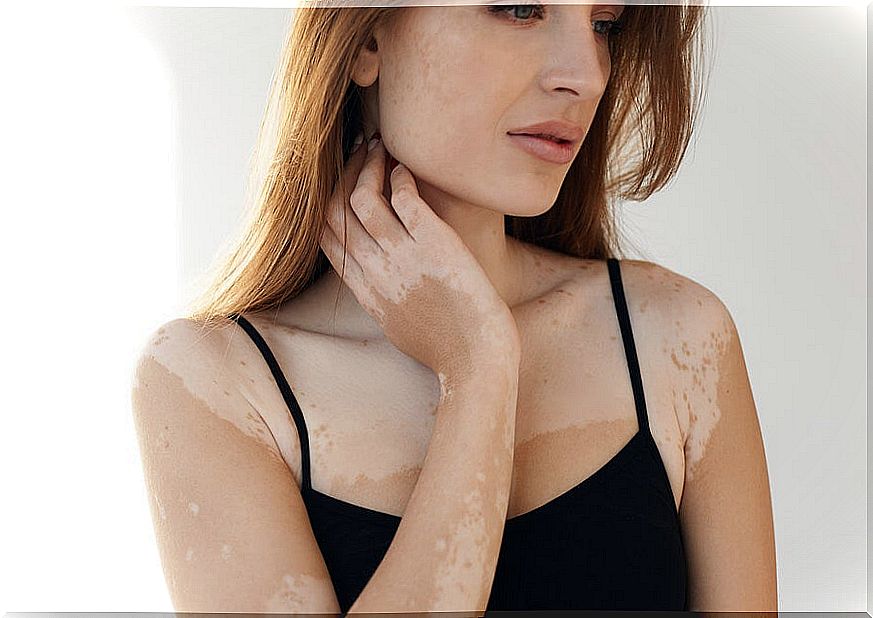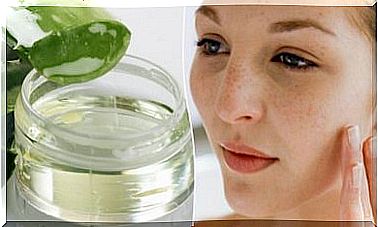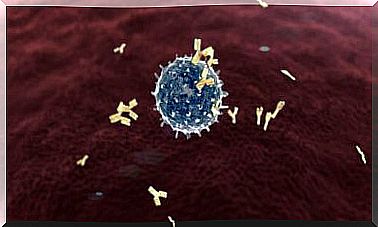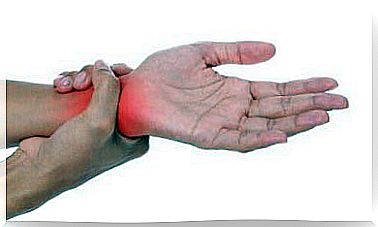Vitiligo: Causes And Treatment
Vitiligo is a skin disease that affects a large number of people. According to the WHO, between 2% and 3% of the world population suffers from this condition that is characterized by white spots, due to the loss of pigment.
Although it is most common on the hands and face, it can appear anywhere on the body. It is an acquired skin disorder that is caused by the disappearance of the pigment cells of the epidermis that gives rise to well-defined white spots that are distributed symmetrically.
The lack of melanin pigment makes damaged skin more sensitive to sunburn, according to a 2001 article published in the American Journal of Clinical Dermatology .
The cause of vitiligo is unknown , but it could involve genetic and neurological factors, autoimmunity … Since there is no treatment to cure it, current modalities are aimed at stopping the progression and achieving repigmentation to repair the shape and deficiencies of the vitiligo. depigmented skin areas.
Causes and symptoms of vitiligo
In relation to vitiligo, what is confirmed is that it is the disappearance of melanocytes in the skin. In addition, there are some theories to affirm why this disease is generated, among them we can highlight the following:
- Due to abnormal nerve cells that damage melanocytes by forming toxic substances.
- By the body’s immune system, which perceives melanocytes as foreign agents.
- Due to toxic by-products that are generated in the body and that influence the melanocytes to self-destruct.
- Due to a genetic defect that makes melanocytes susceptible.
How does it manifest?

Vitiligo manifests itself as lighter patches of skin. They usually appear in the areas most exposed to the sun, such as hands, face or arms, but they can also appear in other places such as the groin or abdomen. On the other hand, people who suffer from it have a tendency to turn gray prematurely.
It is not a contagious disease. It can appear at any age, although it usually occurs before the age of 20 and the spots can increase in size as time passes, although it is difficult to know precisely to what extent.
Treatment
Treatment for this disease should be prescribed by a dermatologist. It is not recommended that patients turn to natural remedies or therapies as the first option.
If you are under medical treatment and want to try a natural remedy, it is best to consult a professional beforehand. Otherwise, complications could arise.
In addition to the doctor’s guidelines, it is important to remember that maintaining healthy habits often has a positive impact on the quality of life and provides benefits.
On the other hand, there are those who consider that maintaining good emotional health turns out to be an important factor. Thus, patients with diseases such as vitiligo are recommended to learn to manage their emotions and, in general, avoid stress. The objective is to prevent the appearance of new spots or the expansion of what you already have.
Apparently, no medicine can stop the vitiligo process. But some medications, alone or in conjunction with phototherapy, can help restore skin tone:
- Creams that control inflammation. Applying a corticosteroid cream to the affected area can help restore skin color.
- Medications that affect the immune system. Tacrolimus or pimecrolimus (calcineurin inhibitors) ointments may be effective for people with small areas of depigmentation.
In addition, other therapies can also be used:
- Psoralen combined with phototherapy. This treatment combines a plant-based substance called psoralen with phototherapy (photochemotherapy) to restore color to light spots.
- Removal of the remaining color (depigmentation). This therapy may be an option if the vitiligo is widespread and other treatments have not worked.
Finally, surgery can also be used if the above treatments do not work. In any case, the treatment will always be guided by a professional.
Be very careful with the sun
Protecting the skin from the sun is one of the basic measures that every patient must adopt from the first moment. During the summer, care is important, however, it should not be neglected at other times of the year.
The skin must always be kept as protected as possible from the sun, so using sun protection in this case is key, especially in summer, since vitiligo makes the skin more sensitive to the sun. It should be noted that the products that are applied must always be approved by a dermatologist.
Home remedies for vitiligo
Although there is no evidence that the following remedies positively influence the treatment of vitiligo, there are those who decide to resort to them.
Black pepper remedy
It is believed that black pepper could be a good natural treatment for vitiligo, as it could stimulate the production of melamine. However, this is not scientifically proven and further research is required.
Thus, it is an option that is not approved by the medical community and that, for the moment, remains only a popular remedy of the Ayurvedic branch.
Its use as a treatment in vitiligo is not scientifically proven and it can cause eczema in certain patients, so it would be advisable to consult a dermatologist before using it.

In any case, these remedies are a complement, but they should never replace the treatment prescribed by the doctor, which, moreover, should not be stopped prematurely. And, along with this, you must avoid self-medication, as it can have counterproductive effects.
It is important to accept the problem and seek professional support if necessary. If you want to undergo a repigmentation treatment, you should always go to accredited professionals.









